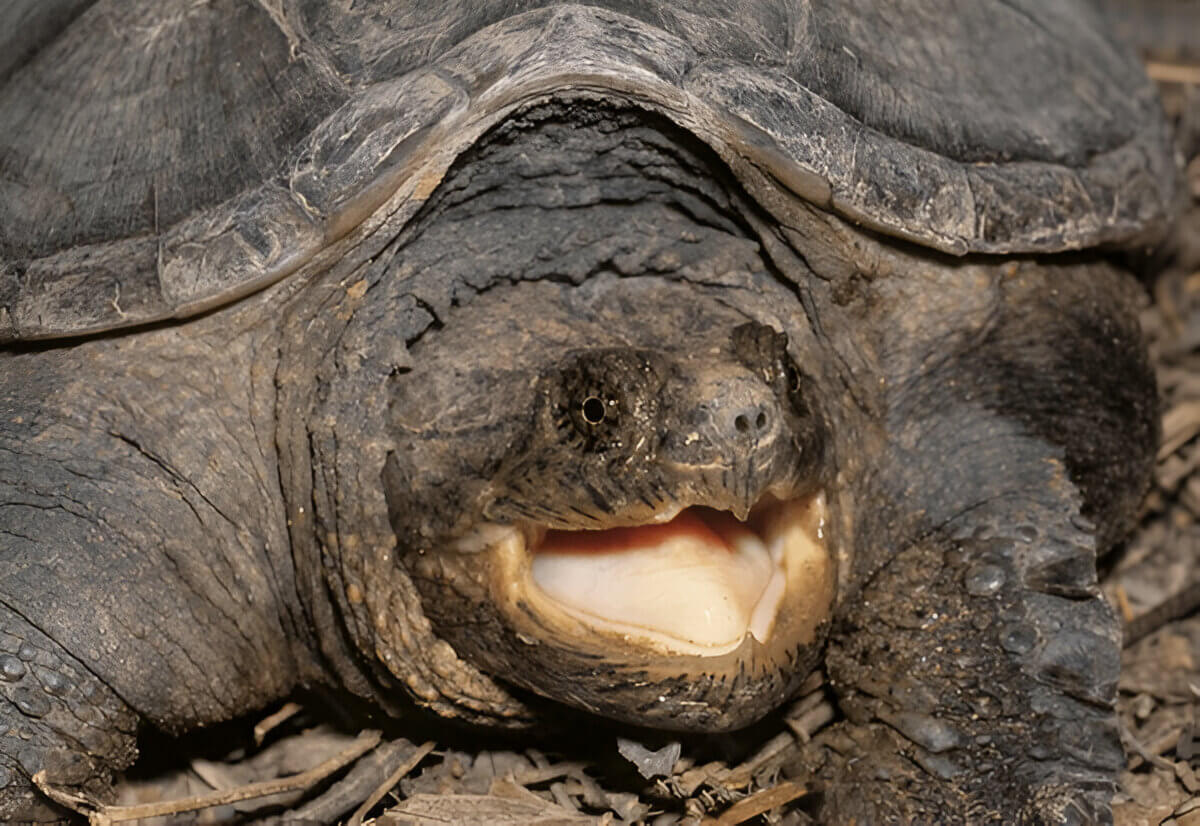
The snapping turtle, known for its strong bite, intrigues scientists and nature enthusiasts. Its jaws exert significant pressure, crucial for survival and hunting. This article explores jaw mechanics, measurement methods, comparisons to other animals, feeding habits, survival strategies, and potential dangers in human interactions. Discover the secrets of this fascinating predator.
The Anatomy of a Snapping Turtle’s Jaw (What Makes It So Strong?)
The snapping turtle is renowned for its formidable jaw strength, a feature that sets it apart in the animal kingdom. Understanding the anatomy of a snapping turtle’s jaw reveals the secrets behind its powerful bite force. At the core of this impressive feature lies a combination of muscular and skeletal adaptations that enable these turtles to deliver crushing bites with remarkable precision.
The snapping turtle’s jaw strength begins with its robust musculature. The adductor muscles, responsible for closing the jaws, are exceptionally well-developed in these turtles. These muscles attach to large areas on both the skull and lower jaw, allowing them to exert significant force when snapping shut. This muscular power is further enhanced by the unique structure of their skulls, which are designed to withstand and channel immense pressure without damage.
In addition to muscle power, snapping turtles possess a specialized hinge mechanism within their jaws that contributes to their bite force. This hinge allows for rapid closure while maintaining precision and control over their bite, a crucial adaptation for capturing prey or defending against threats.
The combination of these anatomical features results in an astonishingly powerful bite force that can easily crush bones or shells. This remarkable adaptation not only aids in feeding but also serves as an effective defense mechanism against potential predators.
Measuring Snapping Turtle Bite

When it comes to understanding the power behind a snapping turtle’s bite, scientists employ a range of techniques to accurately measure bite force. This process is crucial for gaining insights into the feeding behaviors and ecological roles of these fascinating reptiles. Measuring bite force involves specialized equipment designed to withstand and record the immense pressure exerted by a turtle’s jaws.
In scientific studies on turtle bites, researchers often use force transducers, which are devices capable of measuring the pressure applied by the turtle during a bite. These transducers are strategically placed between the jaws of the snapping turtle, allowing scientists to record precise measurements in pounds per square inch (psi). The data collected helps quantify just how strong a snapper’s jaws truly are.
The snapping turtle is renowned for its formidable bite strength, with some studies reporting forces exceeding 1,000 psi. This impressive capability enables them to crush hard-shelled prey and defend themselves against potential threats. By understanding these dynamics through scientific research, we can appreciate not only their role in their ecosystems but also how their unique adaptations have evolved over time.
Comparing Snapper Bites
When it comes to the fascinating world of animal bite forces, comparing the snapper’s bite to that of other animals can reveal intriguing insights into nature’s diverse array of adaptations. Snapper turtles are known for their formidable bite force, which they use effectively in capturing prey and defending themselves. In a bite force comparison, these turtles often surprise many with their impressive jaw strength.
The animal bite strength chart showcases a variety of creatures, from mighty predators like lions and crocodiles to more unexpected contenders such as turtles. While apex predators are typically renowned for their powerful bites (essential for hunting and subduing prey) snapper turtles hold their own in this lineup despite being primarily defensive creatures.
Predators vs turtles in terms of bite power presents an interesting dynamic. While predators like sharks and big cats rely on high-pressure bites to capture and kill swiftly, snappers utilize their surprising jaw strength as a means of protection and deterrence. This comparison highlights the unique evolutionary paths different species have taken to survive in their respective environments.
Ultimately, examining these differences underscores the remarkable diversity found within the animal kingdom, where each species has developed specialized tools suited perfectly to its ecological niche. Whether it’s a predator’s lethal grip or a turtle’s protective snap, every creature plays its part in maintaining nature’s delicate balance.
The Role of Bite Force in a Snapping Turtle’s Survival and Hunting Techniques
Snapping turtles are fascinating creatures, particularly known for their powerful bite force, which plays a crucial role in their survival and hunting techniques. These reptiles have developed unique turtle hunting methods that allow them to thrive in diverse environments. One of the most remarkable aspects of snapping turtles is their jaw strength, which is essential for both capturing prey and defending against predators.
The survival mechanisms of snapping turtles are intricately linked to their feeding habits. With a diet that includes fish, amphibians, and even small mammals or birds, these turtles rely on stealth and precision. They often employ an ambush strategy, lying motionless at the bottom of a body of water until unsuspecting prey comes within reach. At this moment, the turtle’s powerful jaws snap shut with incredible speed and force, ensuring a successful catch.
This formidable bite force not only aids in hunting but also serves as a protective mechanism against potential threats. In the wild, where competition for resources can be fierce and predators abound, having such a robust defense system is vital for survival. As such, the jaw strength of snapping turtles is not just about feeding; it’s an integral part of their overall strategy to navigate the challenges of their environment effectively.
What to Know About Being Bitten by a Snapping Turtle
Snapping turtles are fascinating creatures, but it’s essential to recognize the potential dangers they pose, especially if you encounter one in the wild. These turtles have powerful jaws and a surprisingly fast strike, which can lead to significant injuries if not handled properly. Understanding the dangers of snapping turtles is crucial for anyone who may come into contact with them.
First and foremost, snapping turtle bites can cause serious damage due to their strong bite force. Their jaws are designed to crush through tough prey like fish and crustaceans, meaning a bite from a snapping turtle can result in deep lacerations or even broken bones in smaller extremities like fingers or toes.
To prevent such injuries, it’s vital to handle snappers safely. If you must move a snapping turtle off the road or out of harm’s way, never pick it up by its tail as this can injure both you and the turtle. Instead, use a shovel or stick to gently coax it along from behind while maintaining a safe distance from its head.
In addition to handling techniques, snapping turtle injury prevention also involves being aware of your surroundings when swimming or wading in areas where these turtles are known to live. Avoiding murky waters where visibility is low can help reduce accidental encounters.
By respecting their space and understanding how to interact with them safely, we can coexist peacefully with these remarkable yet potentially dangerous reptiles.